Apia, Samoa--Another South Pacific Island
An island church, more traditional songs and dancing, and a visit to Robert Louis Stevenson's Samoan Home filled a morning in Samoa.
Samoa is made up of nine islands about 70 miles west of Pago Pago, American Samoa and 1700 miles northeast of New Zealand.
The docking-area venue might not have been 5 star, but the energy and talent of this traditional group of Samoan singers and dancers certainly was. They put on a full length performance when we docked in Apia. Those of us lucky enough to have port-side staterooms were treated to a before-breakfast entertainment extravaganza. In 82 degree heat with 62% humidity, these Samoans performed non-stop for nearly an hour. It was the most elaborate welcome we’ve ever experienced in all of our years of cruising. Well done, Apia, Samoans.
We chose a half day Regent-included tour called APIA TOWNSHIP & SURROUNDINGS with these included HIGHLIGHTS:
Stop for a visit at the Immaculate Conception Cathedral.
The Immaculate Conception Cathedral (also known as Mulivai Cathedral) is the Catholic cathedral in Samoa. It suffered damage in the 2009 earthquake and underwent extensive restoration from 2011 to 2014. Our tour guide quoted the cost of repair at $13 million tala (Samoan dollars.) Expensive, but everything had to be imported — mahogany wood for the ceiling, marble for the flooring, all the stained glass and items for the interior.
Definitely an “island” church, all the double side doors can be opened wide to allow for natural ventilation during services. Of note, the church has two sets of the Stations of the Cross, First, the circular stained glass windows featured the traditional motifs.
The second set were raised wood carvings positioned along the side walls. and more modern in nature.
The mahogany wood ceiling is carved with the patterns of the pe’a (Samoan) tattoos. Tattoos are in integral part of the Samoan culture, a visible mark of each person’s status and achievements. It makes sense that their church would also be designated with these symbols of importance.
The interior dome is a highlight of the Cathedral, and the paintings are distinctive to the Samoans. The crown of the dome features a ring of fire.
The Samoan interpretation of the Last Supper is painted on the interior rim of the dome.
Drive to a chief’s gravesite on the Mulinu’u peninsula and visit.
Second stop of the tour. After driving through the city, where the guide pointed out various legislative and judicial buildings, we also did a quick spin through the Marine Division of their College campus. Finally, we visited the grave sites of two of Samoa's more important chiefs. Hint: the larger the tomb, the greater the chief.
Watch traditional dancing at the Cultural Centre at Malita Village and have a traditional snack.
We finally arrived at an open-air cultural center, where traditional dancing was the featured event. This excursion was a popular choice and, therefore, very crowded. As bus after bus arrived, the original covered seating area quickly filled, and about 50 folks had to make do with improvised seats or standing for the hour-long event. The dancing took place in front of the pavilion to the left rear, not an ideal viewing situation for many people.
The highlight of the event was the fire dance. Although it is usually performed in the dark for maximum effect, we still got the general effect. Snacks were provided after the performances, including fresh fruit, fish, and grilled bananas.
Tour the final home of Robert Louis Stevenson.
The third stop, which was the highlight of the morning’s excursion for Sherpa and me, was a visit to the last residence of Scottish author Robert Louis Stevenson and his family. A sprawling island plantation, Stevenson designed and built the house on 100 acres of land in the 1890s. The original property is home not only to his residence and museum but also to a hilltop housing development, a Bible college, and Samoa’s Botanic Gardens.
We toured the interior of the home, starting with RLS’s smoking room. Take note of the wallpaper. Stevenson used one of the local art forms to decorate all four walls—tapa “paper” made from pounded mulberry tree bark, then painted with ochre and brown organic dyes.
I appreciated this detail — a chess set in the corner of his hobby room. Stevenson also had a fireplace installed in this room because it reminded him of home, even though it was never lit. There was no need for a fire to take the chill from cool nights. He was living in the tropics, after all!
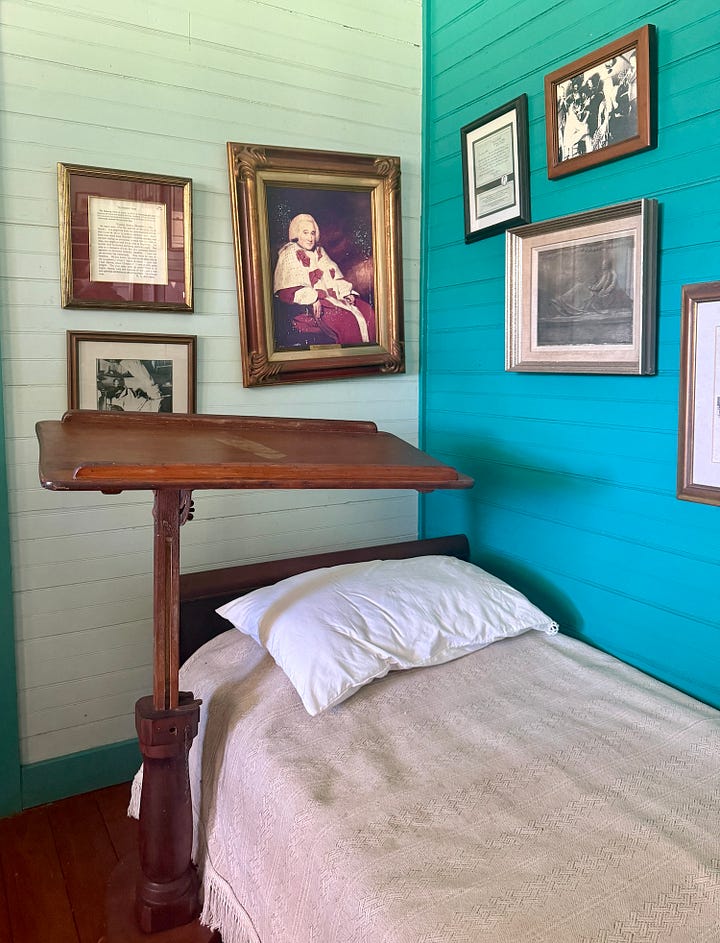
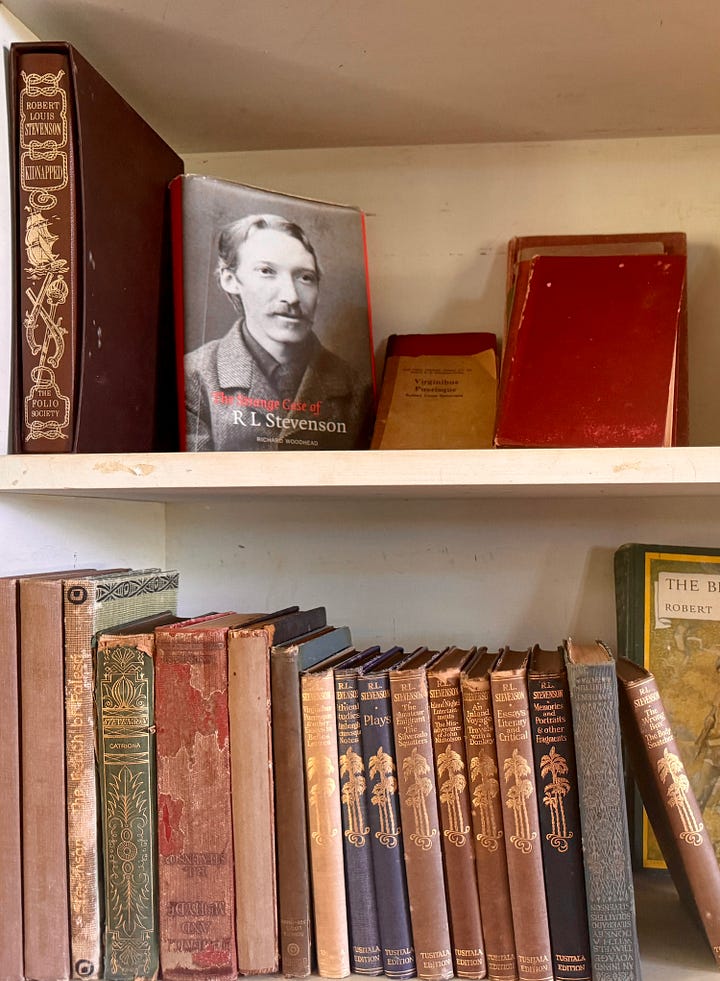
The bedrooms were all located on the second floor and featured large windows with louvered shades, along with access to an expansive verandah. Stevenson had his own bedroom, which served as both a library and a sleeping area. A single bed was unceremoniously shoved into one corner. Robert Louis was unwell during his time here—he had built the home to take advantage of the “curative island air”—and because he slept poorly, he and his wife, Fanny, occupied separate rooms.
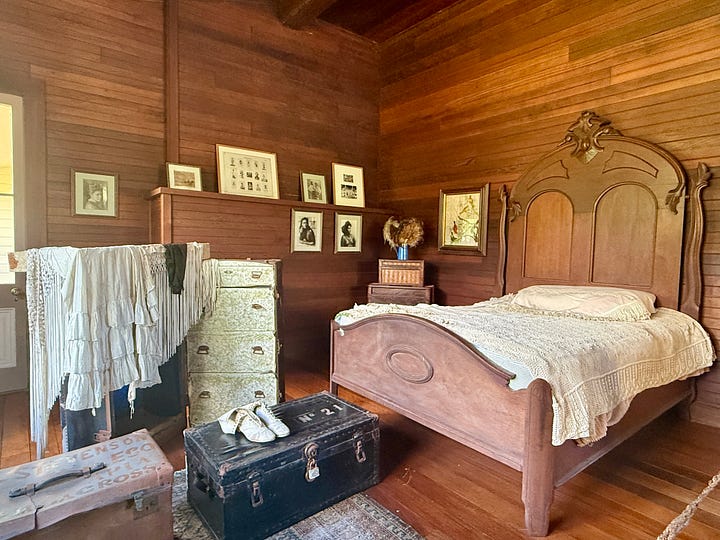
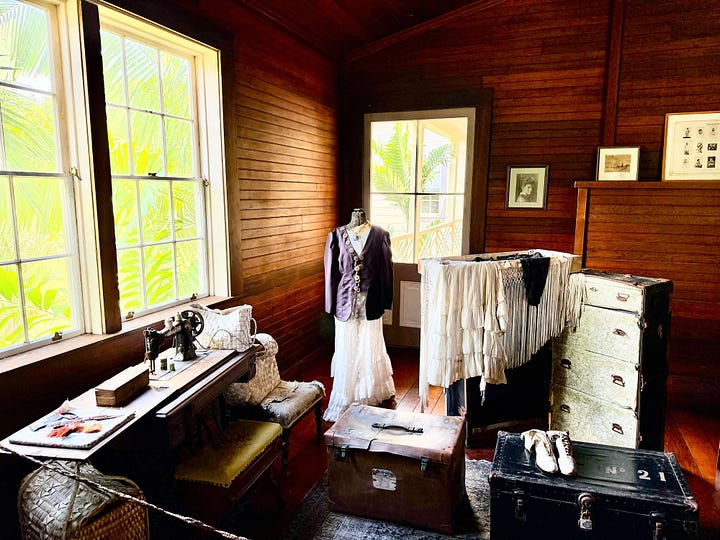
RLS’s wife, Fanny, had spacious quarters next to her husband’s bedroom—there was plenty of room for a double bed, her sewing machine, and various accessories. His mother, Maggie Balfour, along with his stepdaughter, Isobel, and stepson, Lloyd, also had bedrooms in the home. However, his mother despised the heat of Samoa and returned to Scotland after only a brief visit.
The main floor featured a spacious parlor and dining room adorned with dark wood and filled with numerous windows to ensure air circulation. Photographs of Stevenson, his personal papers, and his correspondence are among the artifacts showcased in this room.
A portrait of Robert Louis Stevenson hangs in the Great Room. Although initially a stranger, Stevenson made friends with the Samoans who liked and respected him. He only lived in Samoa for four years before his early death at the age of 44.
Stop at Marketplace for more shopping.
A stop at the marketplace turned out to be fruitful. Sherpa managed to dart across Beach Street to a grocery store and buy his Destination Beer. I found a Tapa after searching the markets from French Polynesia to American Samoa to Samoa for the one I wanted to bring home.
This traditional textile features a turtle design that, in Polynesian art, symbolizes longevity, navigation, and the connection between land and sea. Since we are on a lengthy navigational voyage, moving between sea (on the ship) and land (at all our ports of call), this seemed to be the perfect Samoan tapa to add to our home’s art collection.
Traditionally brewed in Apia, Samoa, by Taula Beverages, Taula Original Lager is the “Brew of Samoa.” ABV 4.9% German immigrants in the late 1800s brewed the first Taula beer.
Sherpa’s take: “Traditional lager - definitely in the beach beer category. It is a very pleasant beer, lightly carbonated with a medium golden color. Malty and smooth on the palate. A slight note of bitterness or sharpness on the finish. It is a very agreeable flavor with a bit of complexity. I’d buy it again. 6.5/10 for its style.”
Next port of call: Lautoka, Fiji.
.

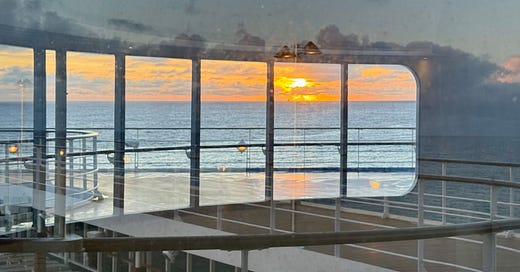



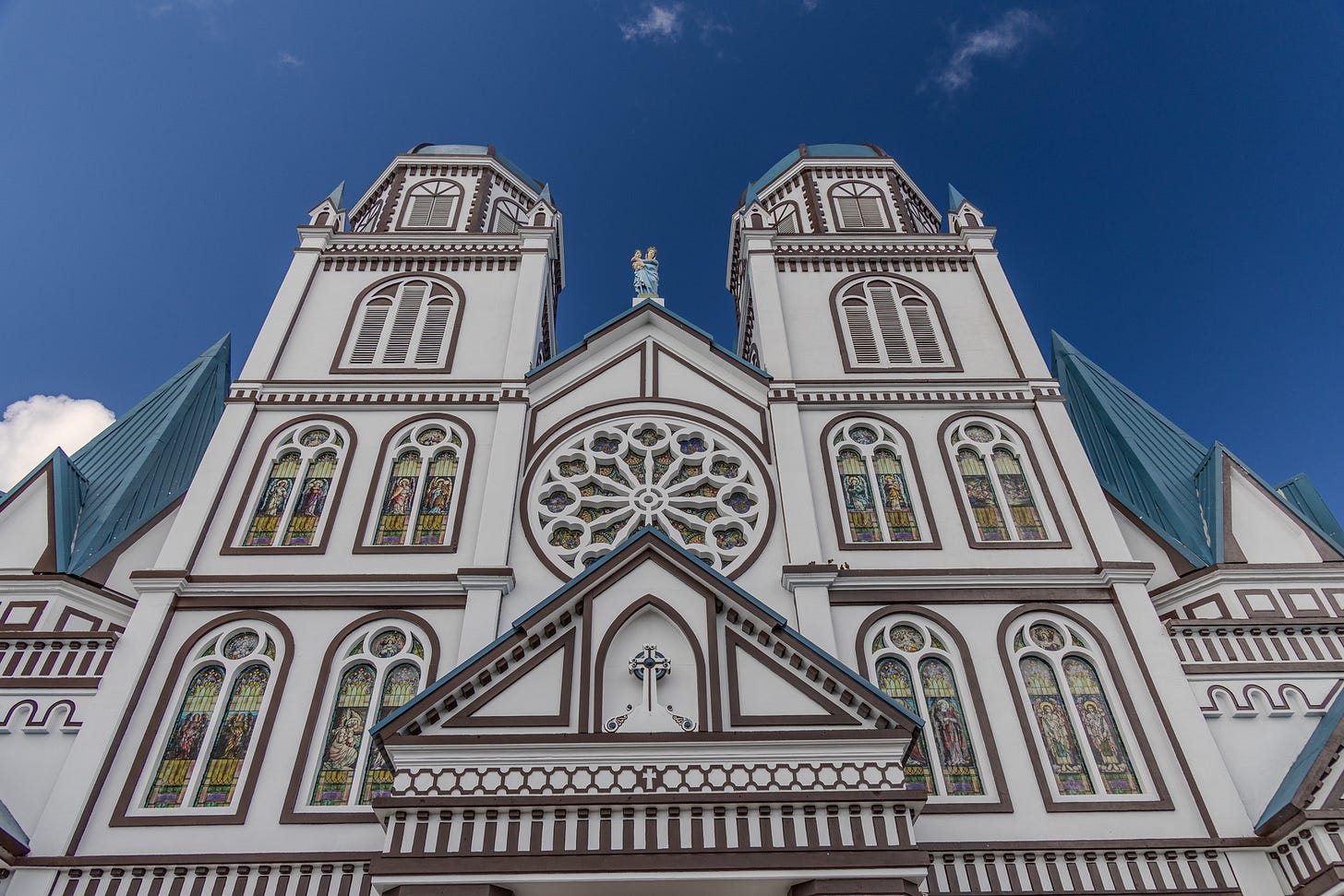
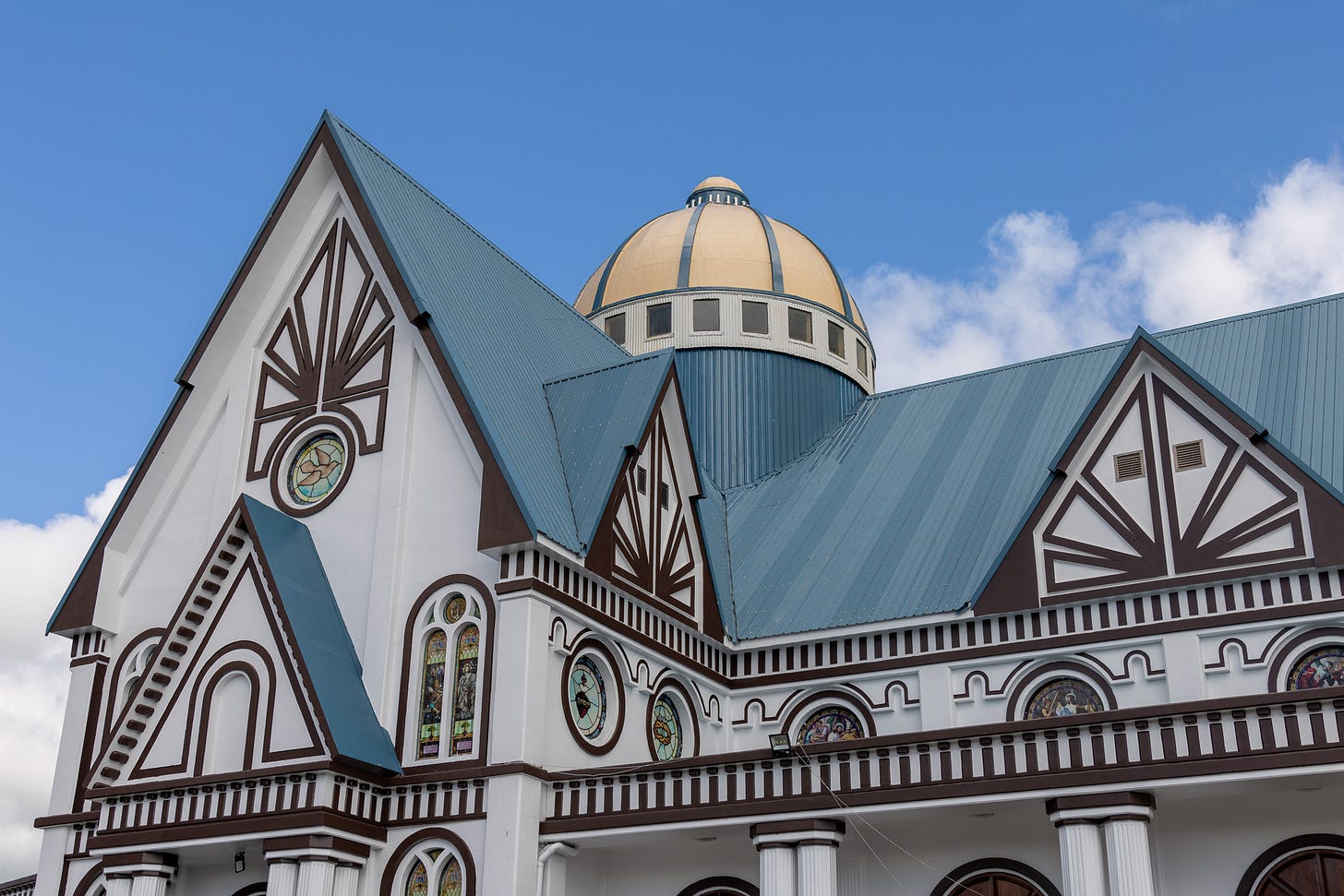
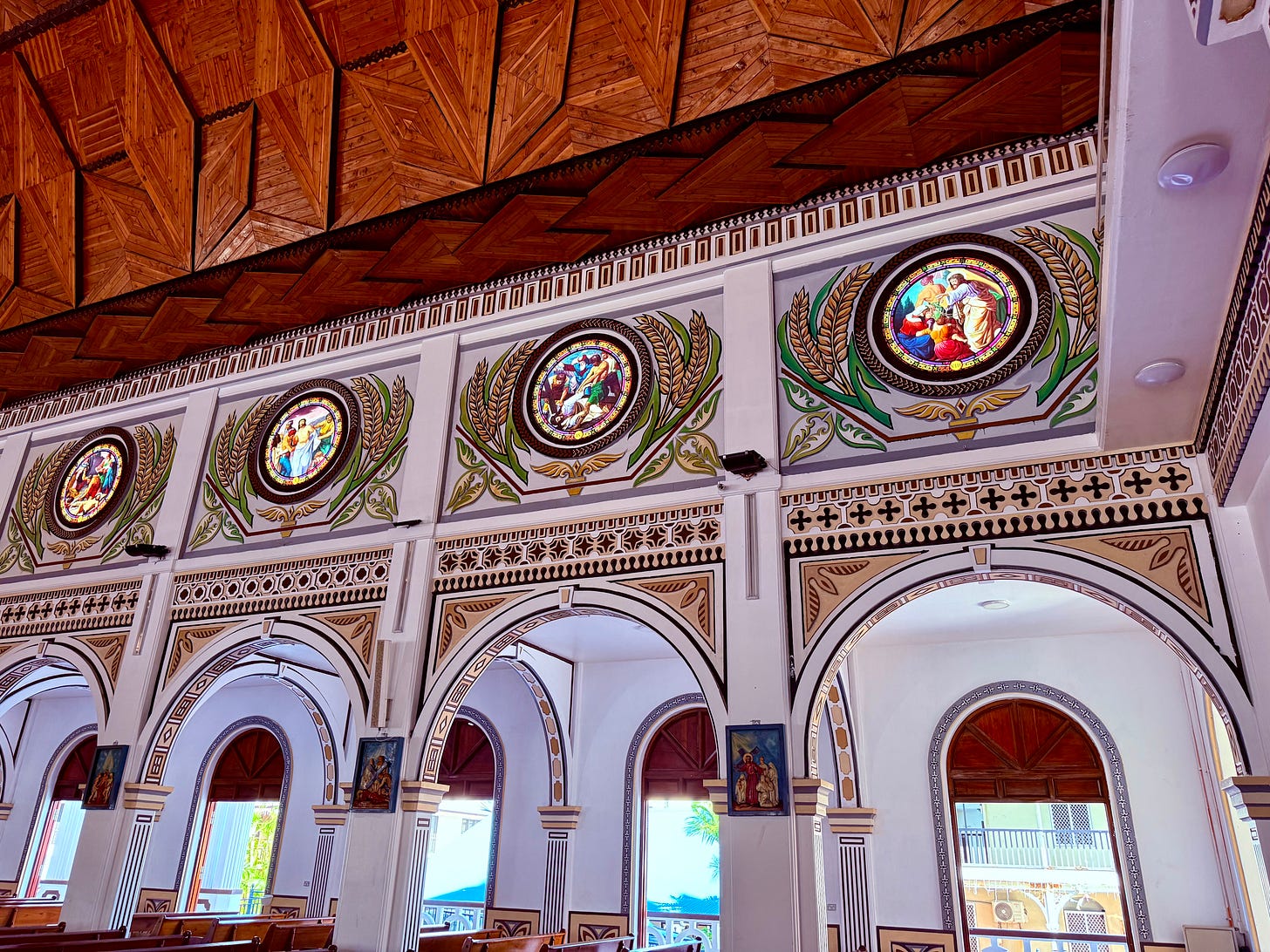
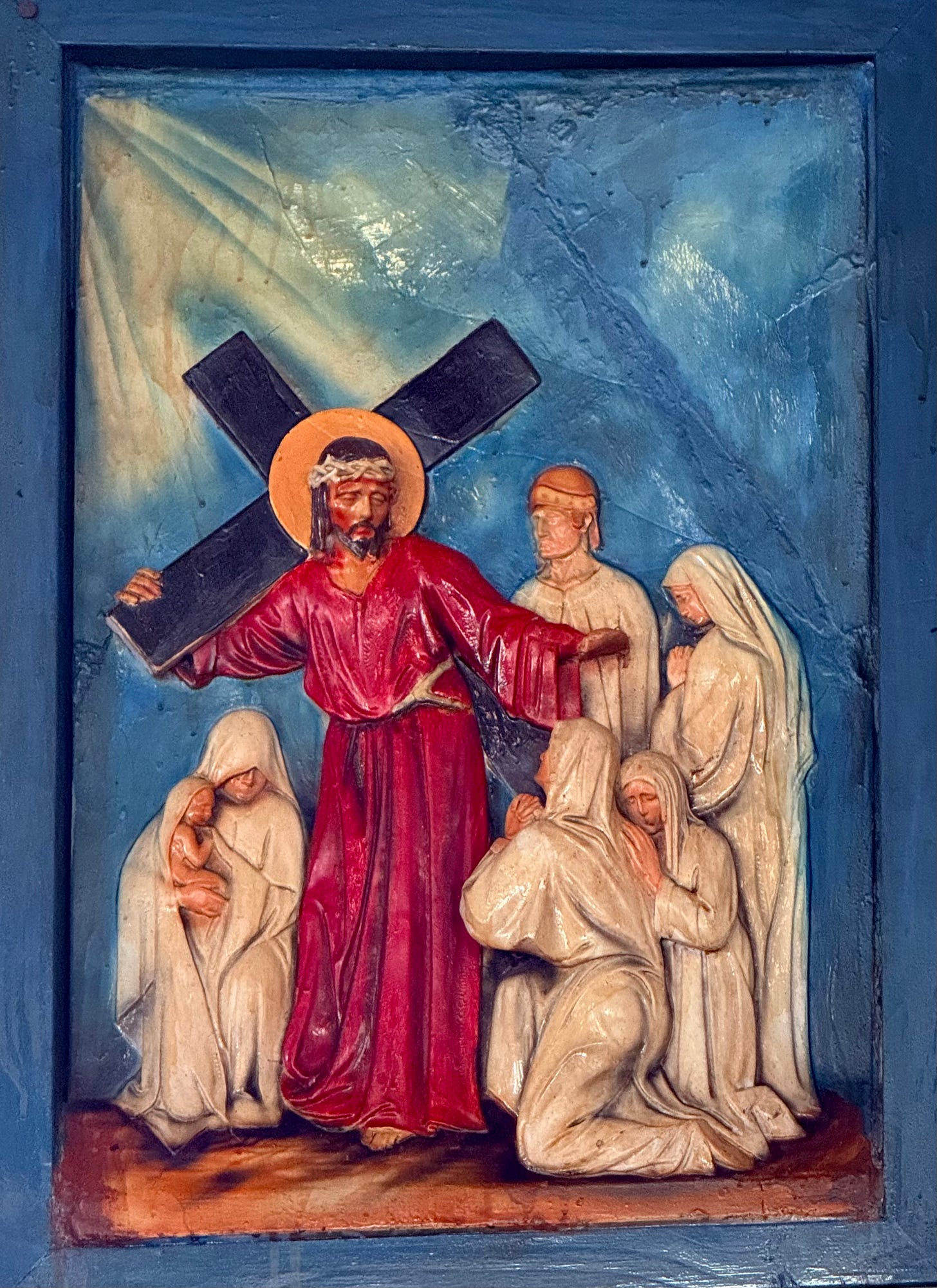
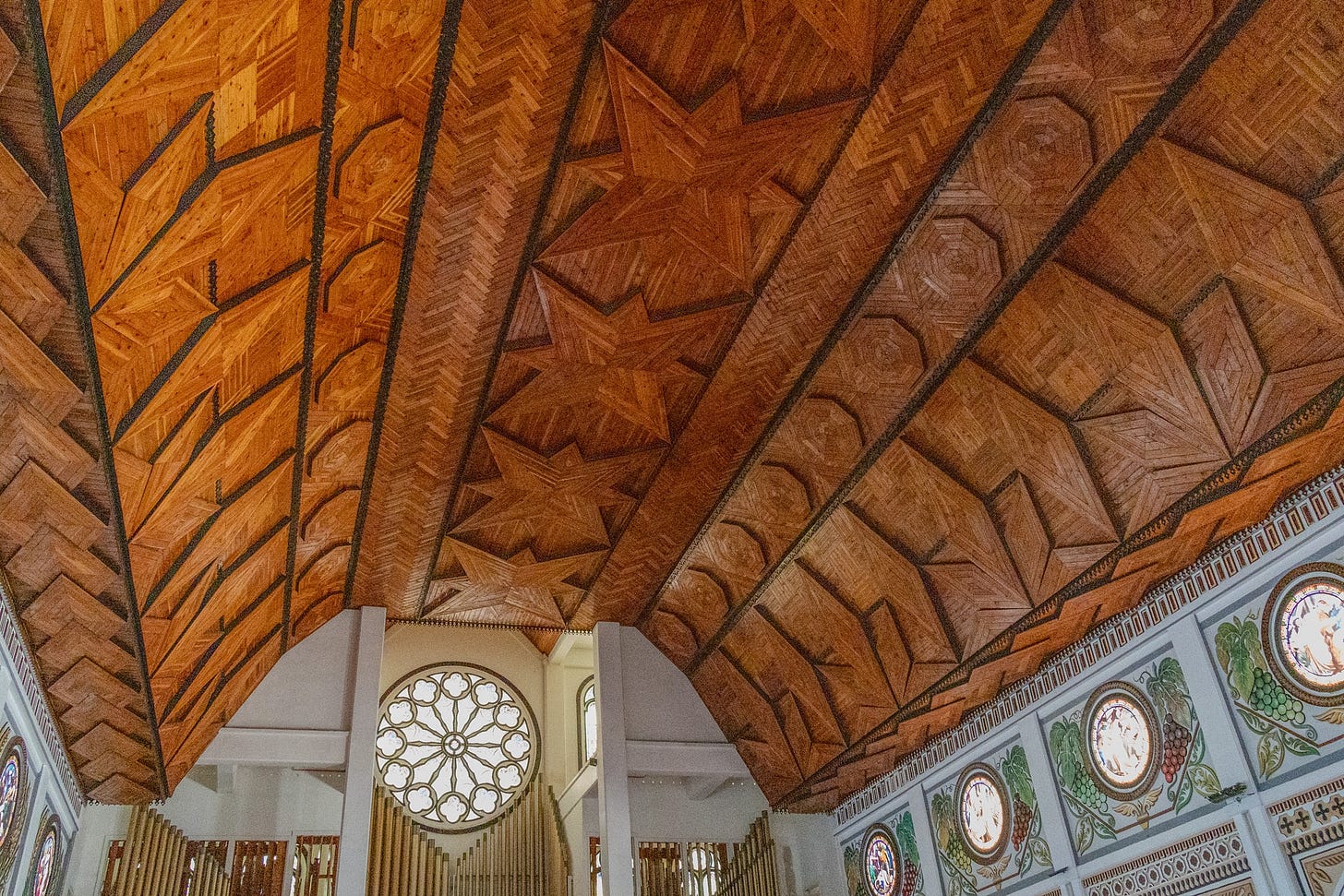
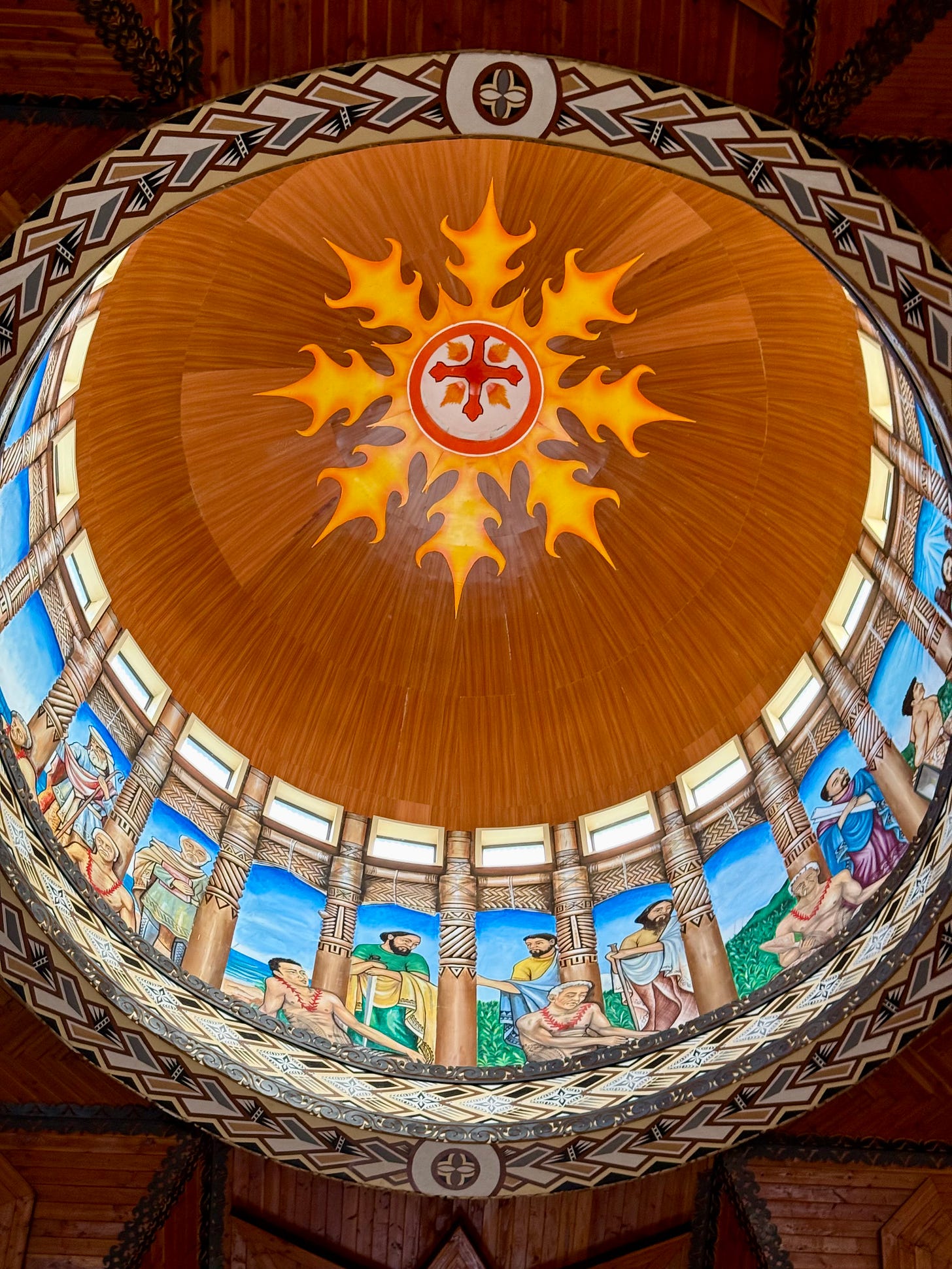
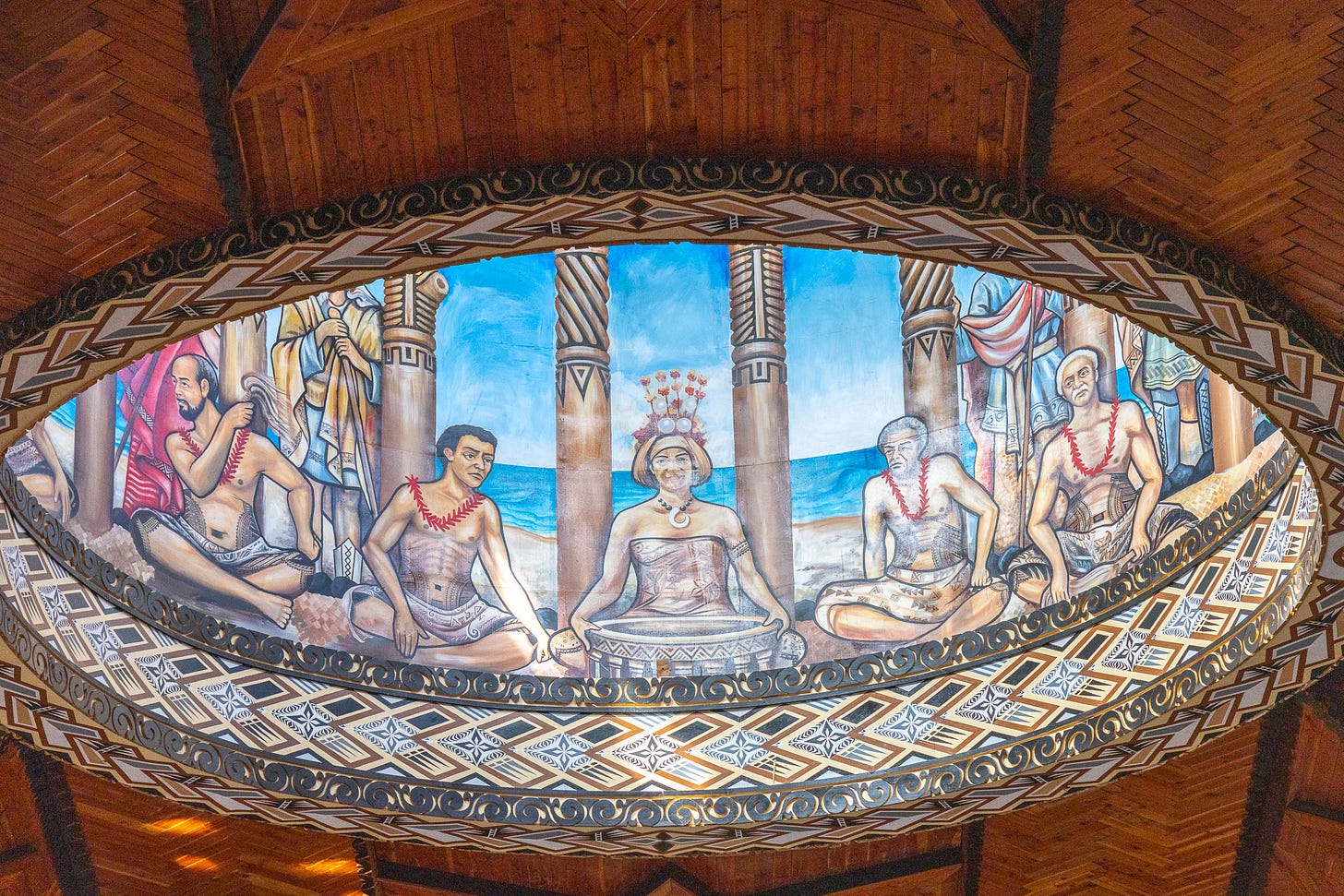
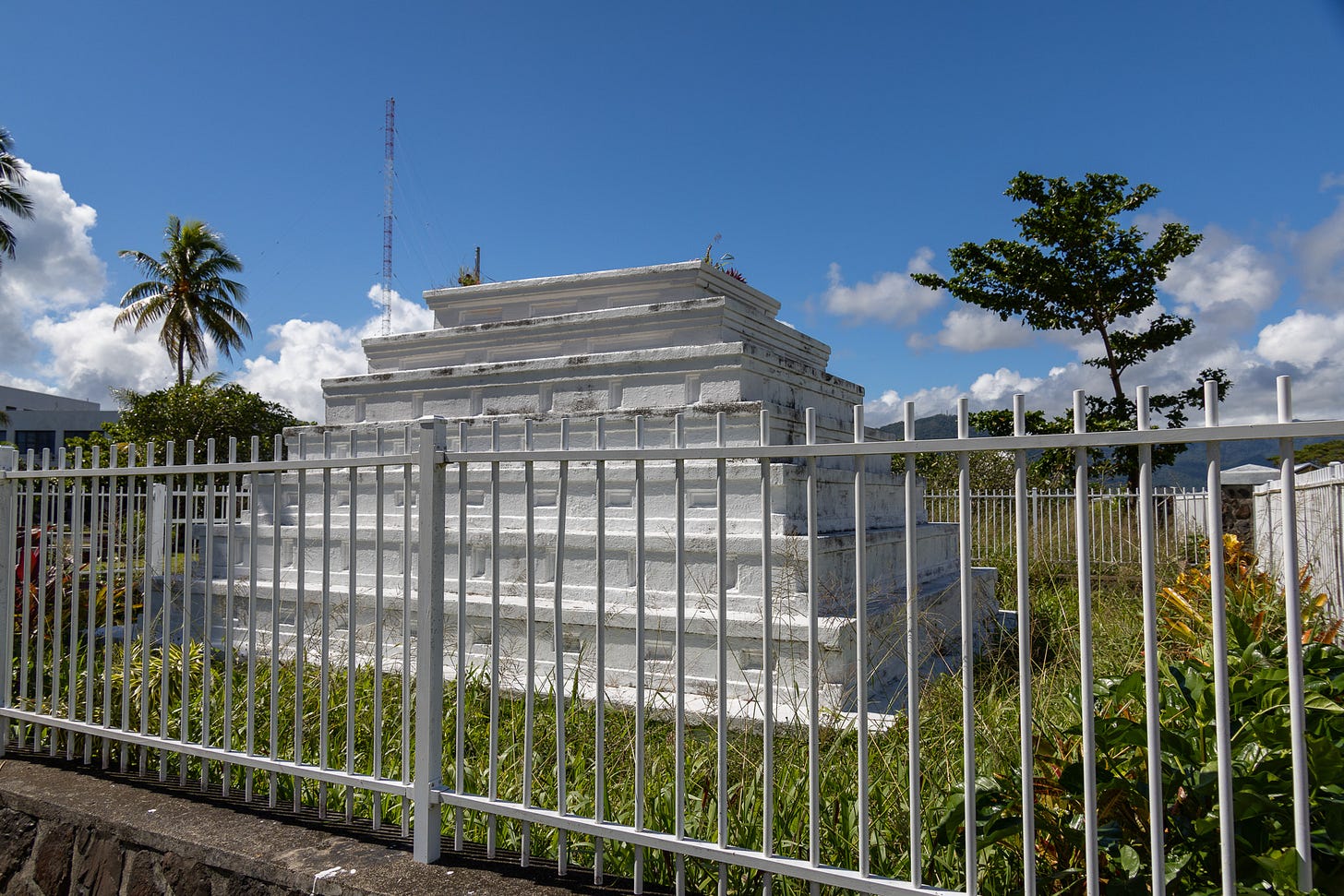
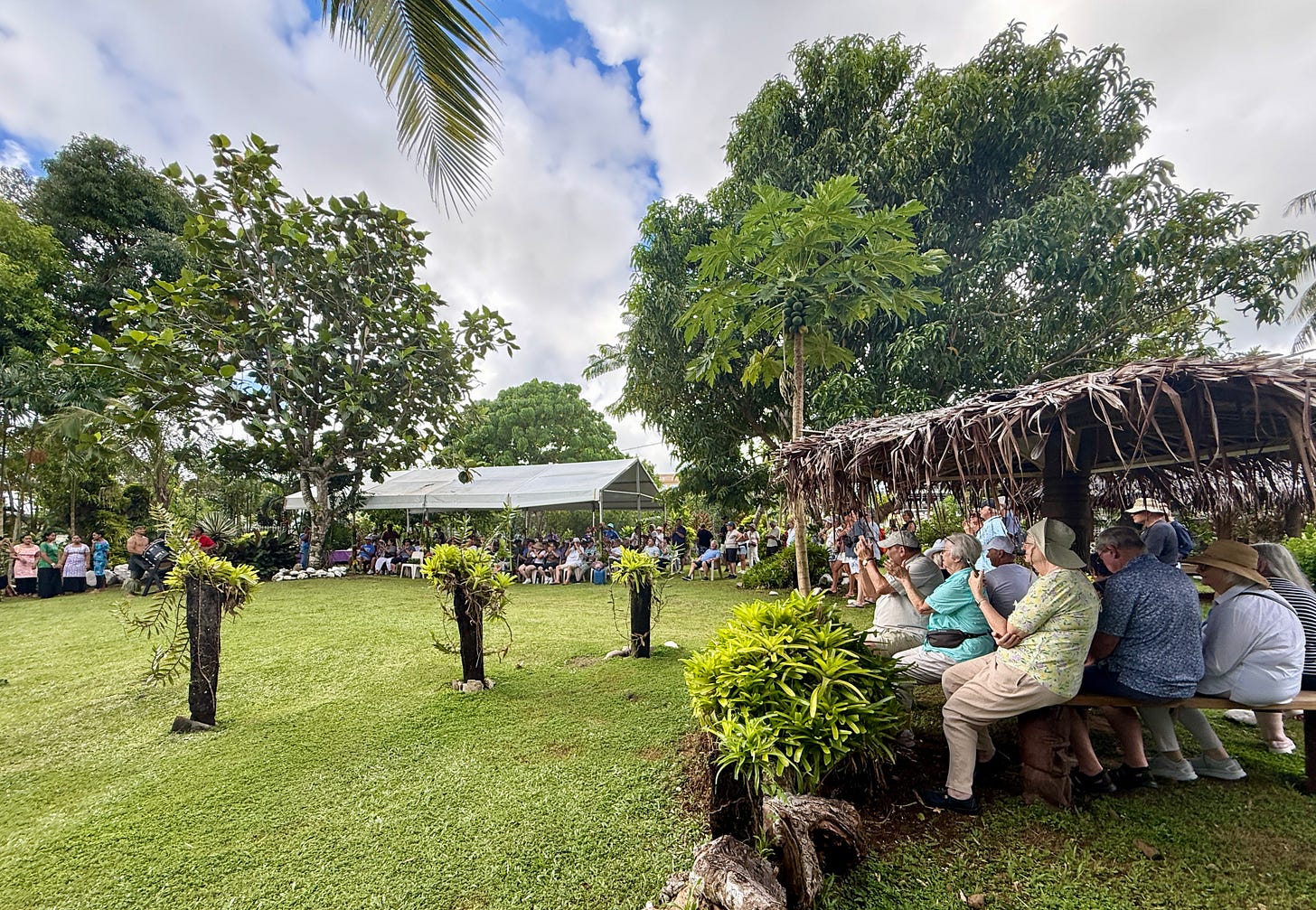
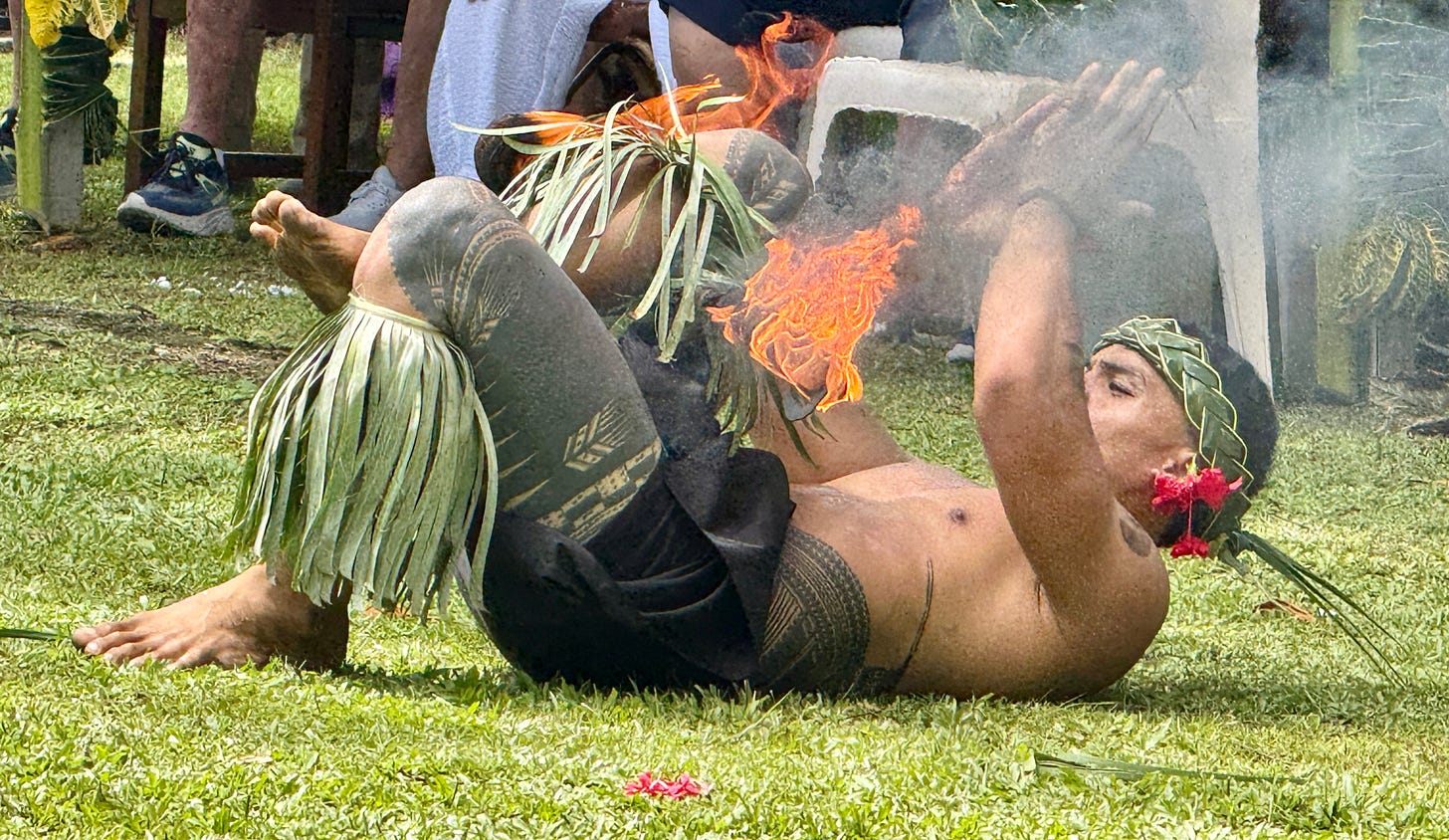
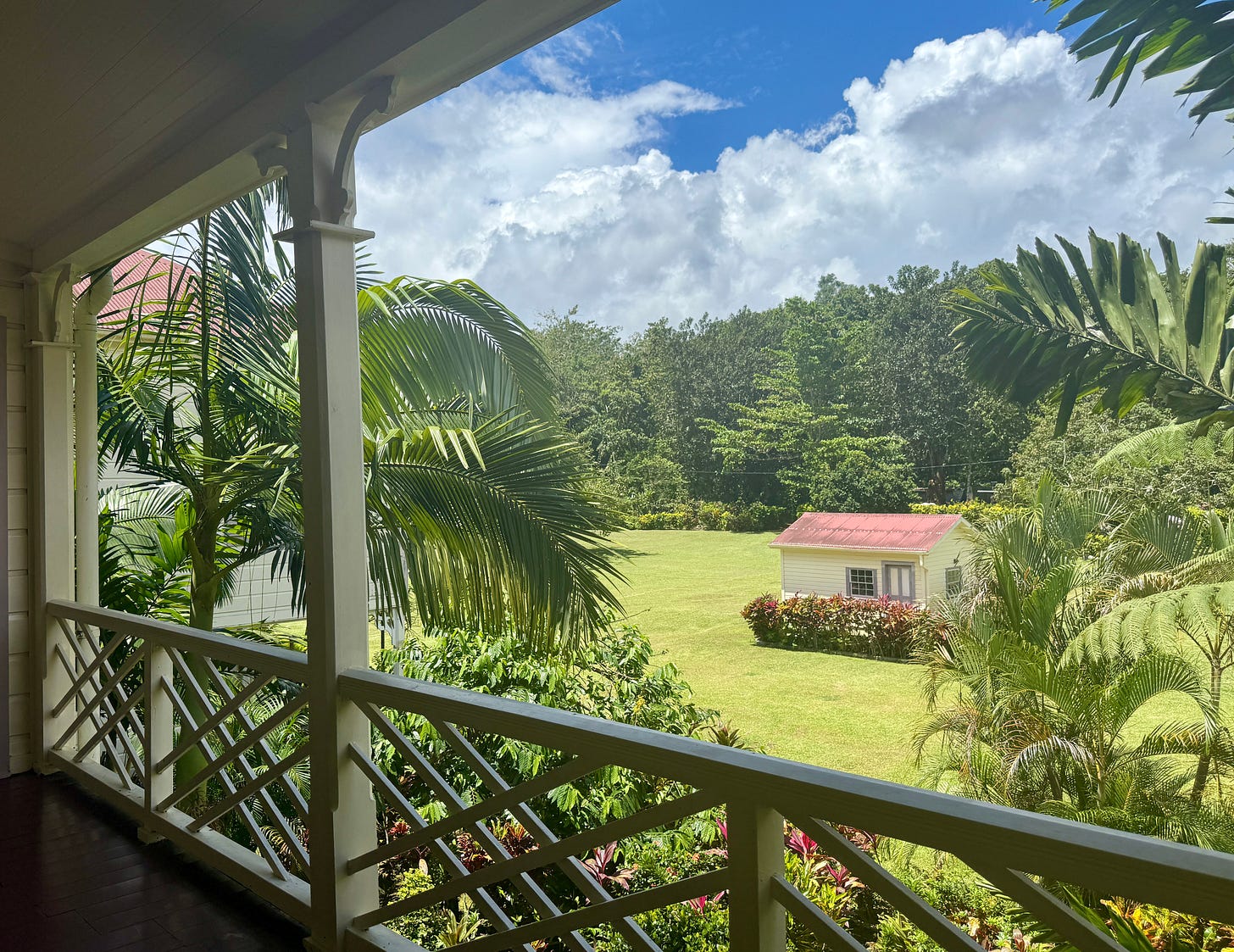
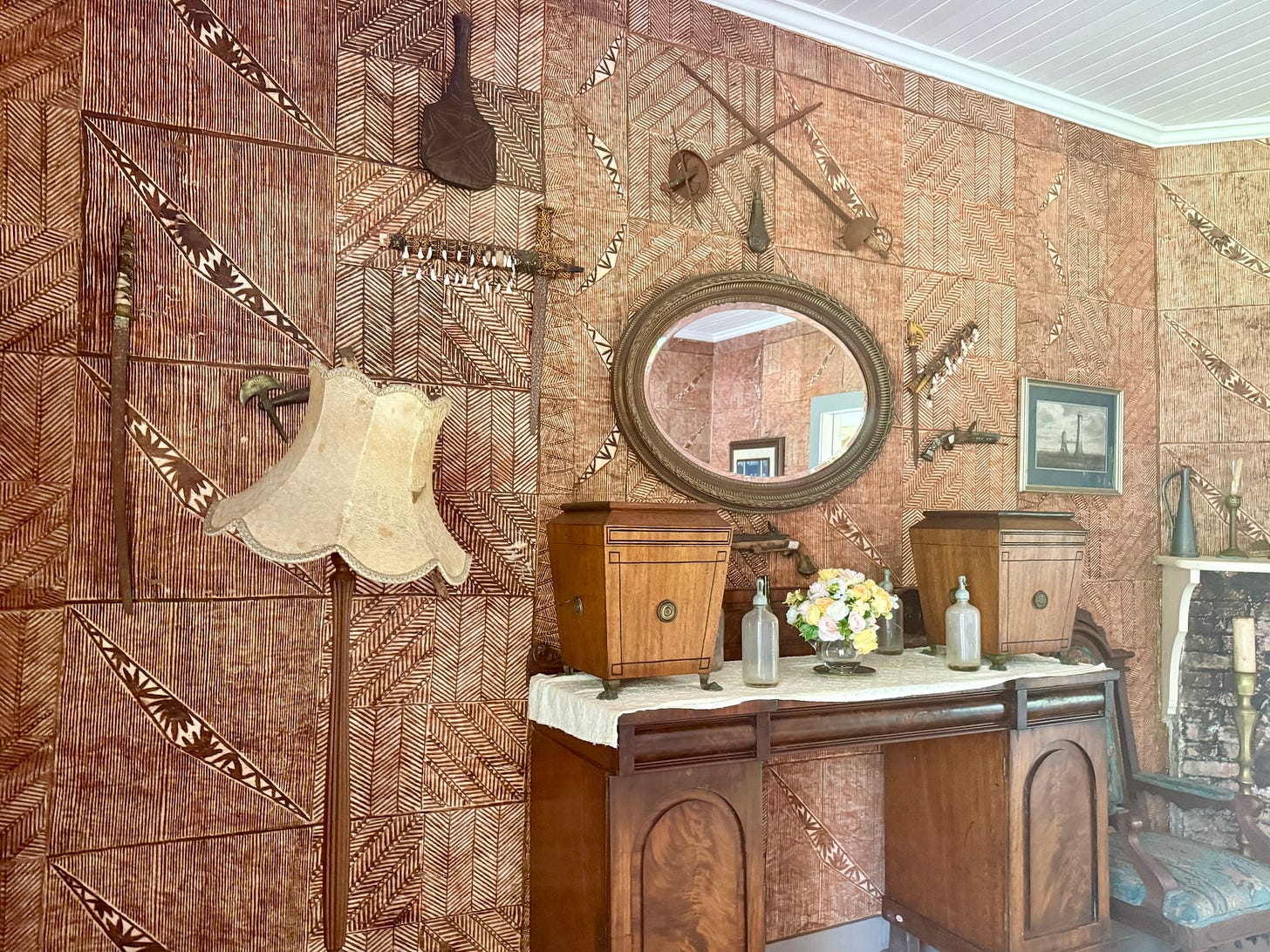
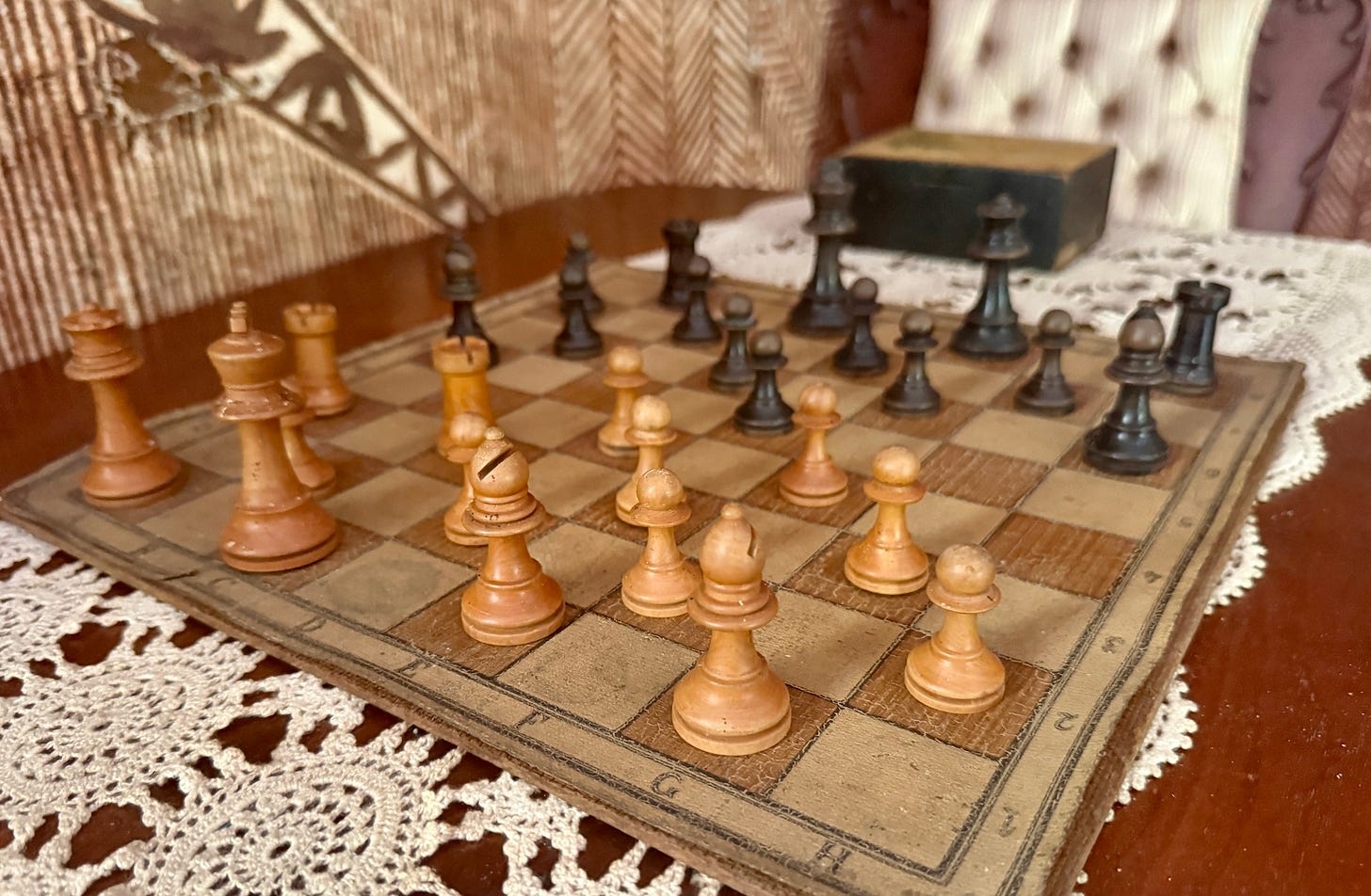

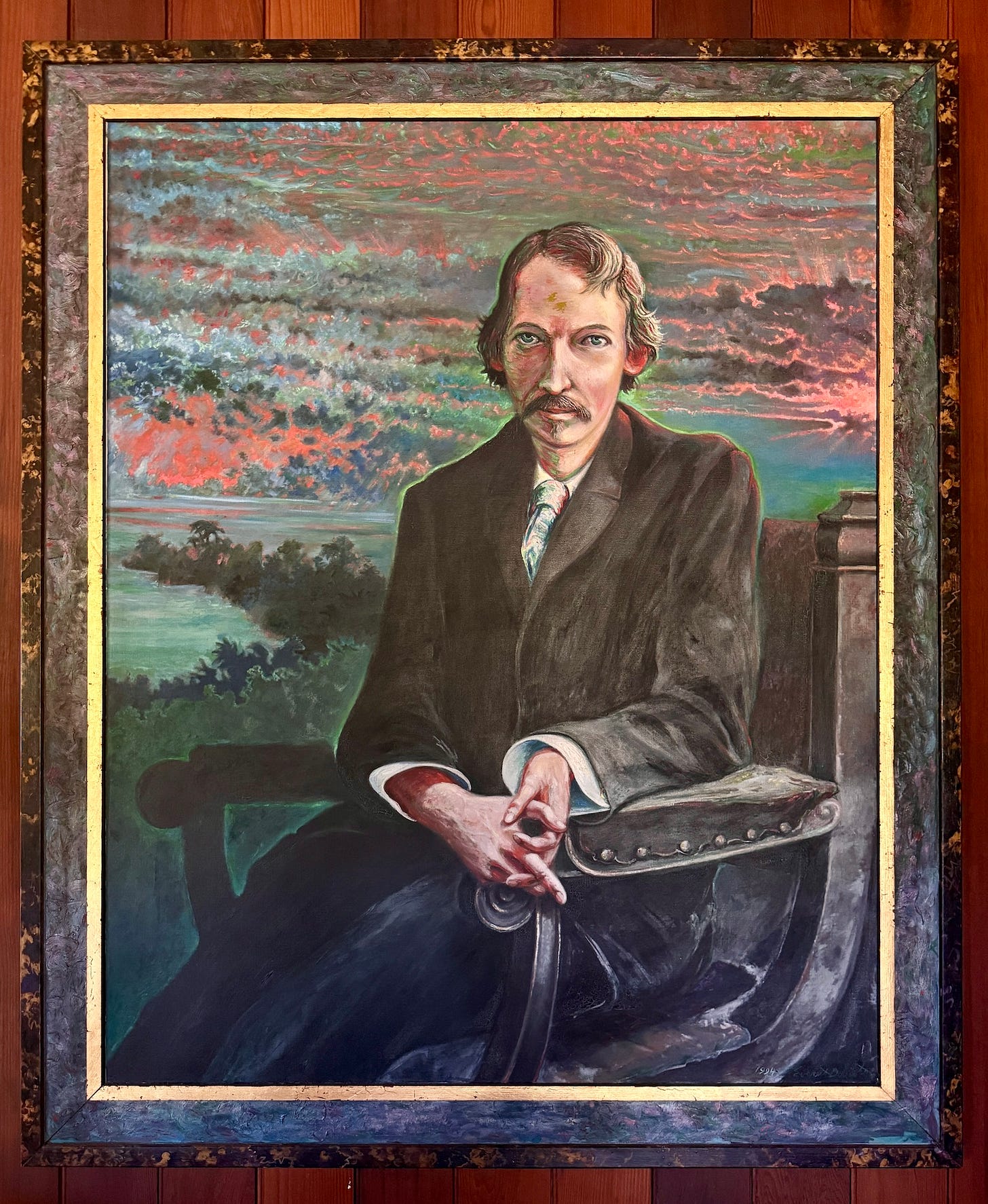
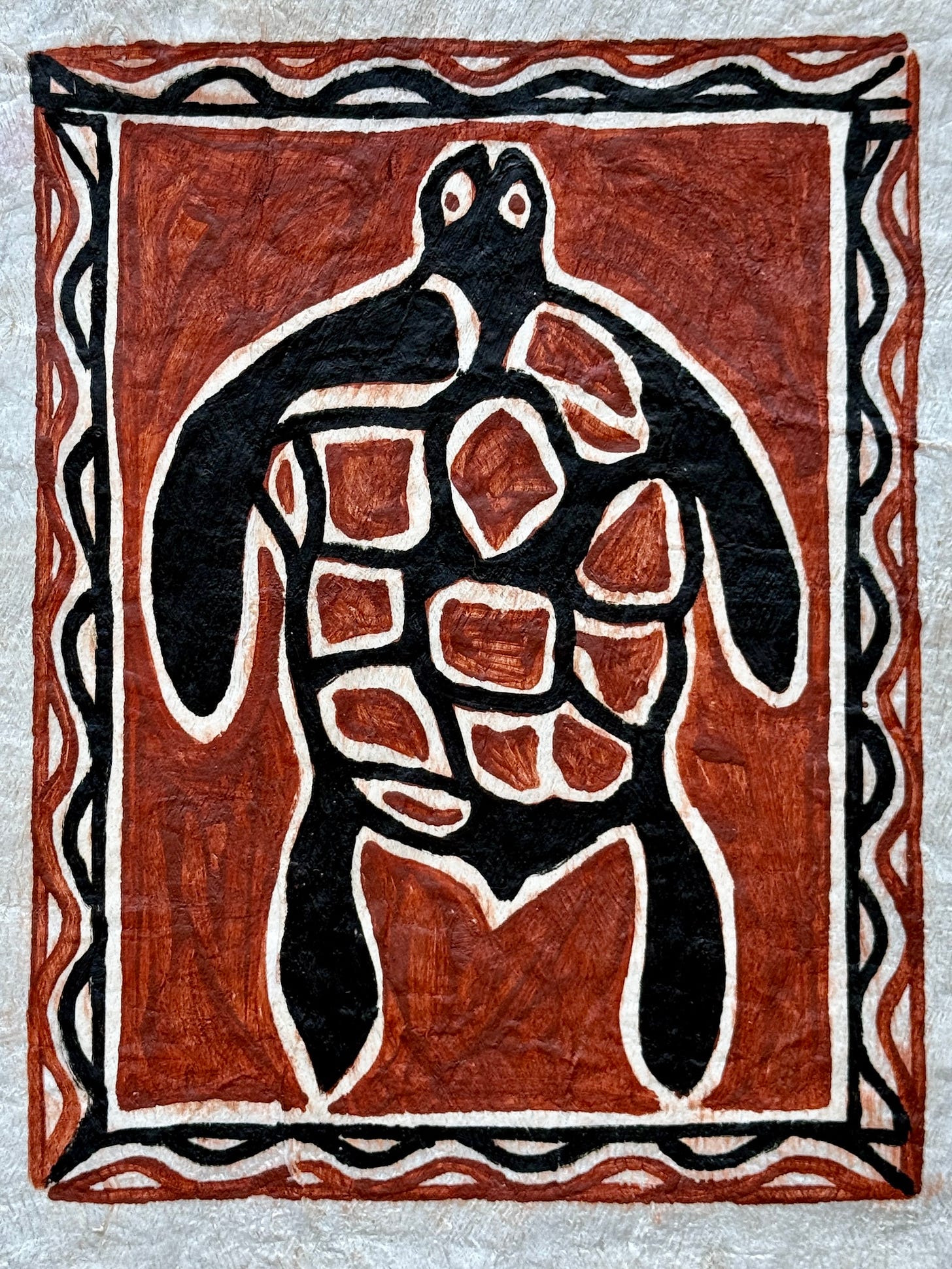

Beautiful photos of architecture. Nice tour of Robert L Stevenson home.
You are an amazing story teller, writer and photographer. I did the same tour but you have brought it to life! Thank you.